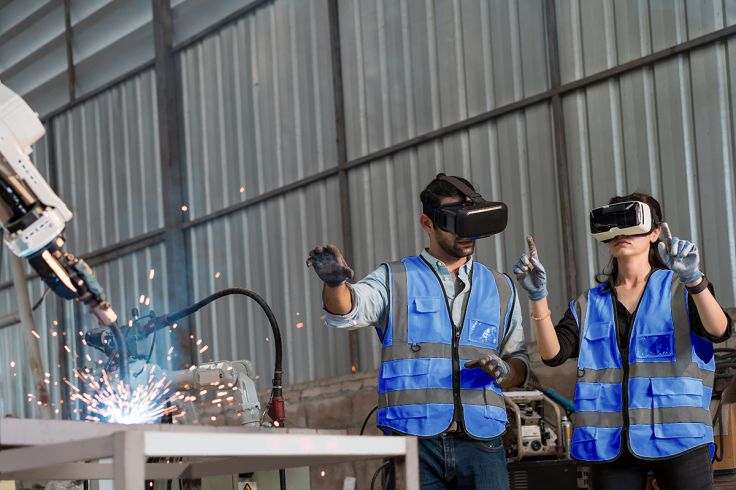Digital Twin – Industrial Metaverse – a Place for Human-Human-Robot Collaboration?
- Published
- 5 min reading

The term “metaverse” has recently been perceived as an overhyped buzzword, an example that too much marketing may hurt a very promising concept (as introduced by my earlier post “The Industrial Metaverse in Telecom: 5G and 6G”). Yet the concept of metaverse is especially promising in digitizing industry and making it more effective and environment friendly. For the telco industry, it may turn out to be the killer app for 5G and 6G networks.
The key element of the concept is digital-physical fusion which can transform a digital twin into immersive environment where human-human-robot collaboration can happen.
Meet me at (Industrial) metaverse, at digitized factory
Probably the most important aspect which can transform just digital twin into a metaverse – an immersive averment - is physical-digital fusion which enables us as human beings to be inside (for example) the digital twin of a factory. We have a choice of being at a given place virtually or physically. That feature differentiates the metaverse concept from the simple virtual world of earlier concepts.
That is especially important for industry digitization, where human involvement is still needed. The ability to transition smoothly from a physical to a digital presence is an important aspect of reducing costs. We can imagine a situation in which some tasks still require the physical presence of a worker who may need the assistance of a colleague of unique competences who can join them purely digitally. In other words, two workers can collaborate in the metaverse, where one of them is physically present and, thanks to augmentation by sensors, can collaborate effectively collaborate with a colleague who has joined them in digital form and is working remotely.
That feature of industrial metaverse can translate smoothly to a situation where the physical presence of humans would be limited to rare cases, with most people working remotely and the only physically present “workers” would be machines.
Robots as field workforce
Robots and drones are machines that are going to replace the need for humans on physical sites. Thanks to the metaverse concept, machines and humans can collaborate as a workforce where the real person’s role would be supervision and contributing creativity, while robots do heavy lifting. When assigning tasks to the workforce, the metaverse concept would enable tasks to be assigned optimally, based on the their physical location and the competences of workers. While robots would need to be present physically, humans would join the team virtually, working just as effectivity as if they were physically present.
Industrial-metaverse – a threat or tool for humans to stay in the loop
There are concerns that machines equipped with AI can make humans redundant, so is metaverse part of the technology that will bring this about? I think the opposite, that metaverse is, by design, human-centric, and robots or AI do not need avatars or realistic holograms to understand their surroundings. It is we, and millions years of evolution which shaped our brains and senses, that mean we need to see the world to understand it.
In other words, industrial-metaverse is a tool for us to be able to stay in the loop, to be able to collaborate with machines and AI and be part of a team where we hope to bring our human creativity while machines do more physical work and repetitive tasks. Whether AI becomes so powerful that it outperforms our brains is another question. Industrial-metaverse, thanks to its immersive capabilities, is meant to be an interface for us to be a part of the team working in digitized factories.

It is all speculation?
All of the above is an attempt to force the future, speculation, a hopefully educated guess. But being able to imagine the future is a problem, in that our brains will resist machine dominance.







